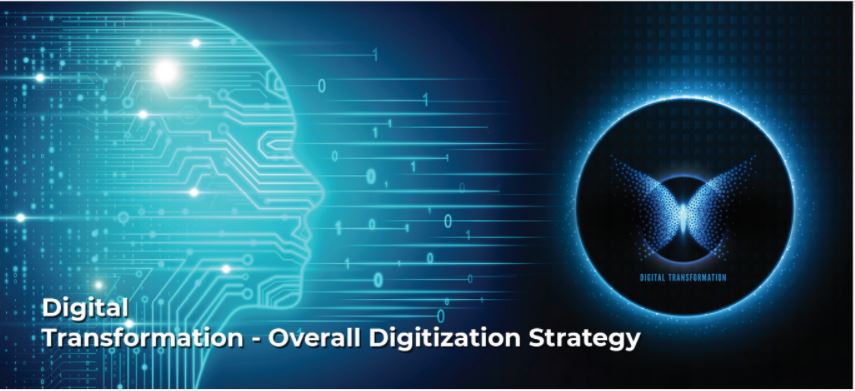
KNOWLEDGE BEYOND WALLS
Gen Extra Muros is a pedagogy for digital teaching; this is the center point to make digital transformation success. Having digital equipments or digital content will not make digital teaching a success – the way you teach is very important.
Virtual School: Building the Connected Learning Community
In the connected learning community, formal education simultaneously meets dual objectives. First, it creates a lifelong passion for learning in every student that transcends and outlives school. Second, it encourages and supports the highest level of student academic achievement.
The fundamental building blocks
1. A modern learning infrastructure
2. Anytime any place access
3. Seamless integration of technology
A Modern Learning Infrastructure
A modern learning infrastructure is an information infrastructure that includes technology (hardware, software, peripherals, and connections to the Internet) and a network of people with technical expertise, practical experience, and knowledge to share. It also includes information in all its available forms
Anytime, Any Place Access
A community can only benefit from a modern learning infrastructure if community members have broad and easy access to it. In a Connected Learning Community, learners of all ages and abilities gain access through desktop computers, laptops, handheld devices and other portable technology tools available at school, home, in libraries, businesses, youth centers, public kiosks, and other points where people gather. Use of the infrastructure in a connected learning community does not depend on owning a computer.
Seamless Integration
As businesses have learned, acquiring technology is only the first, and perhaps the easiest, step in using technology to improve processes and operations. Adjusting the organization to benefit from technology is more difficult Technology, while necessary, is not sufficient. The third and final building block in creating a Connected Learning Community is seamless integration of technology: the total merging of the modern learning infrastructure and access to it.
This transparent interaction enables new levels of learning and new possibilities for the operation and management of schools. For students, technology becomes an everyday learning tool that students can exploit to direct their own learning. For teachers, technology becomes a comprehensive curriculum development and management environment with new teaching resources and new opportunities to individualize instruction. For administrators, technology becomes a tool for continuous school improvement.
To take advantage of the best technology offers in education, schools – from the principals to the administrators to the teachers — must be willing to challenge old assumptions and test new solutions.
The school should create a digital transformation team; the responsibility will be as follows:
Mapping physical classes to digital classes, teachers and students credential creation, mapping of lesson plans, Time Plans, Digital Resource Plan, Delivery Plan and Human Resource Plan.
In every Gen Extra Muros there will be five teaching resources in one class session or called as Class Managers, their rolls and responsibility are as follows:
Presenter: Will present the lesson plan to the learner
Collaborator: Will answers the question from the learner on chat and clarify their doubts
Engagement specialist: will test the learning at various intervals and will publish the results to the class managers
Content Manager: will drive the class by mapping different learning objects for a lesson plan, if the learner are not able to comprehend the lesson the content manager will change the learning object to suit the learners, they will get information from Collaborator and Engagement specialist during the class and will deliver content dynamically.
DTHL coordinator: will look into IT infrastructure, starting and ending of the class, digital resources needed to conduct the class, entry and exit of students, student attendance, responsible for virtual field trips etc.,

Digital Content
The cube leaders (subject experts) along with their team of Content Generators and Digital Content Creators will create content to be presented in virtual classroom. They will be responsible for LESSON PLAN, TIME PLAN, DIGITAL RESOURCE PLAN, DELIVERY PLAN and HUMAN RESOURCE PLAN
Empowered Teachers
Effective learning has always depended on effective teachers. In the age of technology-empowered education, the teacher remains the critical link to learning. The integration of technology does however create a more sophisticated and robust role for teachers in the classroom. Now a teacher
will have more specialize rolls compared to generalized roll in the past. A teacher can be Cube Leader, Digital Content Creator, Presenter, Collaborator, Engagement specialist, Content Manager, DTHL coordinator or all of the above.
Empowered Student
There has been a lot of debate on the following, ideal screen time for students, lack social interaction between students, and can a home environment replace a classroom.
For students, technology is no longer an isolated tool or separate subject to learn. Many students entering schools today have an unparalleled comfort with technology and confidence in their ability to use it. The use of technology is becoming a seamless part of their lives and a powerful tool for learning.
Gen Extra Muros has designed a digital learning format for a Connected Learning.
Educator Time:
Each digital leaning session between a learner and educator should be restricted from a 20 min to 40 min session depending on the age group. In this session, learner will be presented with lessons, in which there will be collaboration, engagement and personalized learning
Peer Time:
Research has shown students learn better by interacting with each other. Therefore, our suggestion is project work should be given to smaller groups of students, assigning them breakaway rooms, so that students can collaborate with each other and compete these projects. This technique will help build their communication, collaboration, creativity, critical thinking and computational thinking
the 5 C’s. These sessions should not exceed more that one hour a day.
Me Time:
Students should learn to do their assignments independently using the digital platform. The platform should be able to assist the student to complete their assignments using AI techniques. This will improve the Critical Thinking of a the learner. AI platform can also record multiple Intelligences of student and make learning personalized. Here multimode assessment could be used to understand the learning capability of a student.
Preparation Time:
When students attend the online classes without being familiar with lesson plan, they are not proactive in the virtual class; therefore, the school must share content for the next day in a video or animated format so that the learner becomes familiar with the Lesson Plan.
Participative Parent time:
Students should interact with their parents on their schoolwork. Parent should spend time with their ward to discuss online classes, their devices, internet connectivity, home comfort etc., They should also cobrowse online with their ward for academic information.
Family Time:
Family time is only for human interaction and social time with the family. As a rule, Learner should close the gadgets, and refrain from discussing schoolwork, it must be fun time.
Learning Without Limits
Researchers have long shown that every student learns differently. While some respond to visual cues or reading, some learn best by doing or watching. In the past, it has been too difficult for a single teacher to accommodate a range of learning styles. Now, with the use of technology, schools can more practically and affordably tailor information and class activities to meet the learning
needs and styles of individual students. By harnessing the power of networked computers and online assessment tools, some educators are finding a new window into student performance as well as dynamic tools that provide the ability to individualize instruction, motivate students,
and actively involve learners. With implementation of O365 and Lycee – Cyber Academe, using the Gen Extra Muros Pedagogy schools can take advantage of Cognitive learning, Mixed Reality, Immersive Learning, IOT, AR- VR, STEM & STEAM Learning, and Artificial Intelligence, which will\ eventually reach students at home. This will eventually result in learning without Limits.
 CRISIS: TEACHERS LEADING & REIMAGINING THE FUTURE
CRISIS: TEACHERS LEADING & REIMAGINING THE FUTURE
In 2020, World Teachers’ Day celebrated teachers with the theme “Teachers: Leading in crisis, reimagining the future”. Post COVID-19 pandemic, the world is at crossroads and over-extended education systems throughout the world must work with teachers (as the focal point) to protect the
right to education and guide it into the unfolding digital landscape brought about by the pandemic.
Tech Avant-Garde along with its partners Knowledge Key Foundation, Microsoft, Lycee Corp, Roshini Social Schooling during pandemic decided to save formal education, by training and empowering teachers in digital skills. They understood that the failure of formal education would have deep impact on our human capital.
DIGITAL TRANSFORMATION –OVERALL DIGITAL STRATEGY
While school managements are trying to reimagine knowledge Age Learning Spaces, all stakeholders must be taken into consideration. In the current situation without a well thought out plan formal education will come to a grinding halt.
 Gen Extra Muros the digital pedagogy must be adopted and implemented in its fullest form to make Digital Transformation in education successful, and to create a Connected Learning Community.
Gen Extra Muros the digital pedagogy must be adopted and implemented in its fullest form to make Digital Transformation in education successful, and to create a Connected Learning Community.
Traditional schools should be transformed into digital schools. Training in digital technology must be imparted to school managements, principals, teachers and parents to handle the new paradigm. Each stakeholder of education must be trained on how to handle the new way of learning.
The teachers must be continuously trained and certified in digital teaching skills. Social learning platforms must be created for teachers to learn from each other on how to use digital technology in education.
Write to me on your concerns while planning for Digital Transformation – Overall Digital Strategy.
I will get expert opinions to address your concerns. My gratitude to Mr. Vincent KV for his contribution to this article.
ROSHINI KUMAR
Thought Leader – Digital Transformation
[email protected]
Also Read: Tech Avant-Garde first to partner with NPCI-BBPS for online fee payment























